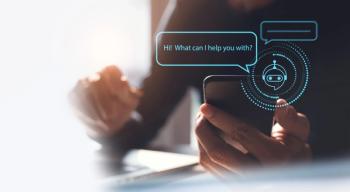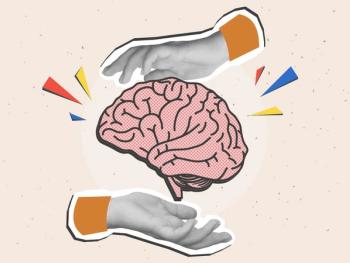
Psychodynamic Telepsychiatry After the Pandemic
Let’s take another look at telepsychiatry.
In August 2022, my article “
A Brief History of Psychodynamic Telepsychiatry
Psychodynamic psychiatry includes a combination of psychodynamic psychotherapy, the application of
Psychodynamic telepsychiatry is the practice of psychodynamic psychiatry over the internet or by telephone. Alexander Graham Bell patented the telephone in 1876. Psychoanalysis, and psychodynamic psychotherapy that evolved from it, was the brainchild of Sigmund Freud who published his findings from the late 1890s until his death in 1939. Articles that described “phone analysis,” the practice of psychoanalysis over the telephone, began to appear in the psychoanalytic literature in the 1950’s, just a little over 10 years after the death of Freud.2-5
Phone analysis and classical psychoanalysis bear important similarities. In both situations, the therapist is out-of-sight of the patient. In classical analysis, the analyst is sitting in a chair positioned behind the patient who is reclining on the analytic couch out-of-sight of the analyst. In phone analysis, there is obviously no visual contact between the analyst and the patient. Treatment takes place solely through the exchange of words between the 2 interlocutors, with attention paid primarily to the content of the speech, but also to the pauses, the expressed emotion, the changes in volume and timbre of the speech, and so on. In classical analysis, however, the analyst can observe the patient’s dress, gait, posture, positional shifts on the couch, and so on. But the primary modality of change in both modalities of treatment is still the exchange of words between analyst and patient.
Telepsychiatry has been used since the mid-20th century, initially for crisis intervention and
Advantages of Telepsychiatry
The internet has made distance teaching, treatment, training, and supervision possible in a way that was unthinkable just a couple of decades ago. Its use was tremendously amplified by the COVID-19 pandemic—a true case of “necessity is the mother of invention.”
The American Psychiatric Association conducted its entire 2021 Annual Meeting online, and the 2022 APA Annual Meeting was hybrid—simultaneously held in-person in New Orleans and online. My wife and I both came down with COVID upon returning from the New Orleans Annual Meeting. We were both treated with Paxlovid, and we made quick and uneventful recoveries.
Telepsychiatry will be the modality of choice for patients with severe agoraphobia and for those who live in rural areas away from major psychiatric centers. Telepsychiatry is used for patients with illnesses and disabilities who cannot leave their homes or institutions to access in-person psychiatric treatment. Alternatively, psychiatrists make home, nursing home, and hospital visits. If the patient or psychiatrist relocates to another state, they may both decide that optimal treatment will involve maintaining the established therapeutic relationship through telepsychiatry.
In 2001, psychiatrist and psychoanalyst Elise Snyder, MD, began the China American Psychoanalytic Alliance (CAPA), that has grown over the past 20 years into an organization in which 400 English-speaking psychotherapists around the world teach, treat, and supervise Chinese mental health professionals who have been vetted for their English proficiency, over the internet in 5 Chinese cities (
Efficacy of Telepsychiatry
In a 2014 meta-analysis review of papers published over a 40-year period, the authors concluded that “meaningful studies showed no difference in accuracy or satisfaction between in-person and telepsychiatry assessments.”6 In a 2023 report published in Psychiatric News, the authors found that patients were less likely to cancel telepsychiatry visits compared to in-person psychiatric appointments.7 I believe that—with few exceptions—the therapeutic efficacy of telepsychiatry is identical to in-person treatment.
Is One Modality Better Than the Other for Certain Patients?
Technophobia is a fear, dislike, or avoidance of new technology. Technophobic patients, generally elderly individuals who did not grow up in the computer age, may avoid the use of computers, smart phones, etc. Cenophobia is the fear of new things or ideas and may also interfere with the clinical use of telepsychiatry. I treated a former patient who retired on psychiatric disability in the context of having become paranoid with the introduction of computers to her workplace. Until the COVID pandemic, she met with me in my brick-and-mortar office, but afterwards only met over the telephone, since she never owned a personal computer or smartphone.
Socially phobic, paranoid (about internet intrusion), and patients on the autistic spectrum might prefer telepsychiatry rather than meeting with a psychiatrist in-person. In general, younger patients—and younger psychiatrists—who grew up routinely using internet platforms and
Adapting In-Person Treatment to Telepsychiatry
I have been practicing telepsychiatry full-time since the beginning of the pandemic in early 2020. After two years, I closed my Washington, D.C. brick-and-mortar office, opened my virtual home office in Chevy Chase, Maryland, and after a year, relocated my practice to Los Angeles, California. I begin meeting with patients at 8:45 AM PT/11:45 AM ET and end my workday at 4:30 PM PT/7:30 PM ET.
The frame of the treatment in telepsychiatry appointments should be maintained just as with in-person treatment. I email my patients at the beginning of each workday (considering the 3-hour time difference) and let them know when they will be receiving a Zoom link or a FaceTime call from me later in the day. The medium of telepsychiatry is more abstract than in-person, and notifying my patients in advance of meeting with me has resulted in almost no missed appointments. Shortly before Zoom appointments, I send my patients a Zoom link and “Enable the Waiting Room,” and I call FaceTime patients at the time of their appointment.
It is important for the psychiatrist to arrive a little early for Zoom appointments since, to quote Freud, “The goal of treatment is to help patients exchange neurotic misery for normal human unhappiness,” and if we are late for the appointment, we would be adding to our patients’ neurotic misery—of which they already have more than enough. If a patient misses an appointment, and I cannot reach the patient, if I am concerned about the possibility of self-harm or a
The beginning of the session varies with each patient but usually involves a pleasantry such as “Hello, how are you?” I then either wait for my patient to begin speaking, ie, “to free associate,” or, with a newer patient, encourage the patient to speak. I once heard that a handshake used to be a way to reassure the other person that one was not holding a knife or a gun, and pleasantries at the beginning of the session have a similar purpose, ie, to let the patient know that one is friendly, not an enemy.
In my experience, the screen will disappear after a short time, and you will be interacting with your patient just as you would in person. Treat interruptions on the patient’s side, eg, reading text messages during the session, as resistance to treatment by commenting on the behavior, but never criticizing it. Our attitude is always one of working with patients to engage their curiosity, never in opposition (with rare exceptions). By listening to your patients, and not interfering with what they are saying, you are expressing empathy and acceptance and your patient is internalizing a transference-imbued outer presence. This is a vitally important function.8
Pay attention to your patient’s affect onscreen and point this out. “You were smiling when you just said that. I wonder what you were thinking?” Or “You looked sad just then. What were you thinking about?” This will enhance the therapeutic relationship by letting your patients know that you are authentically tuned into them, and it will be a stimulus for further associations.
Toward the end of the session, tell your patient, “It is time to stop for today.” Putting it this way refers to the initial contract you made with the patient about the length of time of the appointments. End the sessions on time within a minute or two at most. I often add: “See you next week,” or “See you on Thursday” to maintain a sense of continuity with the patient.
I use e-prescribing software for all prescriptions including controlled substances (eg, stimulants and
Advantages of Telepsychiatry
Telepsychiatry saves time by eliminating the time it takes for the patient and psychiatrist to drive or metro to the brick-and-mortar office. Telepsychiatry avoids the possibility of automobile accidents and speeding and parking tickets. It saves money on gas (or electricity for EVs), office rent, and cleaning costs. Importantly, it avoids the possibility of sexual or aggressive transference or countertransference enactments. Telepsychiatry provides flexible meeting venues for patients and psychiatrists. Ideally both should meet from consistent locations.
Disadvantages of Telepsychiatry
There will be less observable door play at the beginning and end of each session. There will be decreased observation of body language and gait. There will be an absence of olfactory stimuli: breath, perfume, and body odors. There will be more potential distractions in the form of emails, text messages, phone calls, children, and pets. Some of these interferences will add, however, to an appreciation of the patient’s social and living environment. There is the potential for decreased confidentiality when other people are in the room; when packages are delivered; and when patients are in nonprivate locations, eg, in an automobile, in a public library, in their bedroom, etc.
There is also greater opportunity for countertransference enactments. I heard of one therapist who conducted treatment while driving.
Technological Challenges in Telepsychiatry
Older laptops with built-in speakers and microphones will degrade the communication between psychiatrist and patient. The fix: the psychiatrist and patient should use stand-alone high-quality speakers, microphones, and cameras that can be plugged into USB ports of the laptop or computer.
Slow Wi-Fi will result in screens freezing and in dropped calls. The fix: switch to FaceTime or WhatsApp or purchase more speed. The speed can be measured with the free online program speedtest.net.
When the laptop camera is built into the top of the screen, this can make your eyes appear to be looking down at the patient. The fix: purchase a stand-alone camera that you can position in the center of your screen.
The Future: Artificial Intelligence (AI)
“Project Starline” is a program in a demo stage by Google that will use AI to create 3D images of people using several cameras simultaneously and a screen. It will create the feeling of another person’s presence and will allow for nonverbal cues and eye contact—a person’s arm will appear as if it is coming through the screen. It will be akin to a 3D TV and no headsets will be required. Prototype testing is currently being conducted by Salesforce, T-Mobile, and WeWork. Flickering pixels, however, have the potential to make some people ill.
Concluding Thoughts
Just as many government and private employees have balked at returning to the in-person office, and studies have shown that employees are, in general, more productive working from home,9 many patients and psychiatrists have continued to engage in treatment using telepsychiatry after the official end of the COVID-19 pandemic in May 2023.
As technology continues to advance, I predict that in-person psychodynamic psychiatry, with few exceptions for certain somatic treatments, will become a thing of the past and will cease to exist within the next 20 to 30 years.
Dr Perman is clinical professor in the Department of Psychiatry and the Behavioral Sciences at the George Washington University Medical Center in Washington, DC.
References
1.Perman GP. Virtual psychiatry is here to stay. Psychiatric Times. August 22, 2022.
2.Saul LJ.
3. Zalusky S.
4. Aronson J. Use of the Telephone in Psychotherapy. Jason Aronson Inc; 2001:468.
5. Leffert M.
6. Hyler SE, Gangure DP, Batchelder ST.
7. Patients found less likely to cancel telepsychiatry visits, study shows. Psychiatric News Alert. August 9, 2023. Accessed September 12, 2023.
8. Poland WS.
9. Surprising working from home productivity statistics (2023). Apollo Technical. January 3, 2023. Accessed September 12, 2023.
Newsletter
Receive trusted psychiatric news, expert analysis, and clinical insights — subscribe today to support your practice and your patients.

















